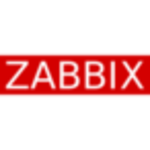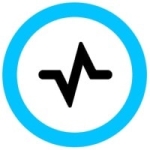What is our primary use case?
We had Dynatrace Synthetic Monitoring in place, and we had Gomez. The whole point of that was to really check for system availability, to make sure we knew if the site was going down, etc. Since then, we've put in the full Dynatrace solution to prevent customer impact, some kind of site outage. That's the whole point of having it, so we can identify problems sooner, fix them, and stop the site going down.
How has it helped my organization?
We have had a few instances where we found small problems. They may or may not have been a full site-outage, but they certainly would have had some kind of customer impact. We only put the tool in a year ago but we've already got quite a number of things. We've found the product has helped us to identify an issue and we fixed it before there was any customer impact. So we're seeing the benefit already, which is great.
To use an example, the savings in terms of cost and time. We use it for live monitoring, but we also use it in our performance testing. So that alone, that issue I just talked about, was a performance testing issue, and we would have put that change live without Dynatrace.
Finding that problem in "live", that would have been three or four days of investigation, whereas we found the issue, fixed the issue, reran the tests, all same day. That was days and days and days of cost-savings, in terms of resources, and allowing them to actually do other things that they're there to do.
What is most valuable?
Being able to identify the blind spots. Before, we had lots of monitoring, but it was all very manual. It was literally taking server logs and dumping them somewhere and someone had to manually go through things. You only monitor what you know about. As soon as we put Dynatrace in, it sprung to life, and we identified problems instantly. The team's reaction was, "Wow, look at that." So finding different parts of the system.
Sometimes you focus on the area where you see the issue, but not necessarily where the root cause is coming from, so you have to go through the full stack and help to identify the problem areas. We've found problems and fixed them in half an hour when it would've taken days before.
What needs improvement?
I think the one that's coming soon, the customer playback and the session replay. Notwithstanding the challenge we might have around GDPR, and the collection of data - which worries me - what we have quite a lot is, a very specific customer situation or customer problem. Of course, we can see problems in Dynatrace, but we might have a customer call in trying to donate, or trying to create a fundraising page, and we can never recreate the issue.
You don't want to have to go to the customer, "What browser were you using, and what were you doing, what day was it, was it cold outside?" To be able to see exactly what has happened, for us to be able to understand that, gives us extra power really to understand the issue and to fix it. Nine times out of 10, it's probably a really simple thing, that we just need a bit of JavaScript or something to fix.
Also the thing that's really powerful is being able to recognize what the customer's trying to do and contact that customer. And for us again, customer is key. For our Help desk to actually be able to help that customer and say, "We see you were trying to donate," or "We can see this happened to you, we're really sorry, we fixed that issue, please come back, or let us help you on that journey." That's really powerful. In terms of NPS, that's really important to us.
I think that would help with those situations, stop the problem in the first place. But also, if there is a problem, being able to deal with it directly with the customer is fantastic.
For how long have I used the solution?
One to three years.
What do I think about the stability of the solution?
It's been stable, I haven't had any problems with it at all.
What do I think about the scalability of the solution?
It absolutely suits us. In terms of the wider bank, within Virgin Money, we can absolutely look to spread it across other applications, which we will be doing. But I think we've probably got the critical ones covered. We can obviously see the benefit, we just need to fight the right battles at the right time to get those things put in.
How are customer service and technical support?
The team used tech support during the original implementation to make sure that it was going well. And it went very smoothly.
I don't think we've had any problems with it from a Virgin Money Giving perspective. Having said that, we had experts using it who were already within Virgin Money. So we were able to use that internal expertise to help us to implement it into our solutions, which was helpful. So we haven't needed to call tech support.
Which solution did I use previously and why did I switch?
This is our first APM tool. We haven't been around that long. I look after a system called Virgin Money Giving, and we haven't been around that long - seven or eight years. It's a really successful business, and as that business has grown and grown, you then see the value in these kind of tools. We managed successfully, we didn't really have many system outages and the like, but we saw the benefit as it has been rolling out across the rest of the bank. It's the first tool we've used.
How was the initial setup?
I was only pointing at people to do the initial setup. I don't come from the technical side, I just run the teams that do the stuff, the proper work. So I was involved in terms of helping to make sure it happens, but not at the level of touching it.
Which other solutions did I evaluate?
We did look at other tooling, but Dynatrace suits us as a solution.
It was the simplicity. Obviously we had heard lots about AppMon, but we went straight into the full Dynatrace solution. The simplicity of the implementation. We literally switched it on and we could see benefit almost instantly.
Also it's the full-stack, one solution that can allow you to track and monitor across the whole of our infrastructure. We haven't got a huge, complicated infrastructure, so its probably quite simple for us, versus people who've got huge amounts of different cloud hosting and all that kind of stuff.
Actually having had conversations with Dynatrace, as part of the proof of concept, it feels like they're constantly looking to innovate. Coming here, to the Performance 2018 conference, there are things about which I'm saying, "I can't wait for that to come." And that's really nice for us as a customer, to be waiting for the next thing to come to help our business.
What other advice do I have?
We we haven't really gotten anywhere near the area of AI and IT's ability to scale up the cloud and monitor performance management issues. Having been through sessions here, at the Perform 2018 conference, that's definitely something we need to be focusing on. We're not using cloud in any way, as an organization, other than things like Dynatrace. AI is definitely on our roadmap, but we're not there yet. It's something that's coming up a lot, and you can actually see the benefit.
Regarding a solution that could provide real answers, and not just the data, the immediate benefit for our team would be time and cost. We're running a website that needs to be there 24/7, and because we're Virgin Money Giving, we deal with quite personal things. People are raising money for good causes, things that are personal to them. So if our website isn't available for any point in time, it can be really quite heartbreaking for people, people can't donate to their cause, or give money to the charity they want to. The whole customer experience is really important, so anything that allows us to prevent problems sooner, and prevent system problems, is right for the customer. And that's important to our brand.
In terms of selecting a vendor, for us, because Virgin Money as an organization has important values, we need to find a vendor that has the same kind of values. I think there needs to be a synergy around what we're wanting to do.
Also the key thing is support. Sometimes you can have third-party relationships, or vendors that sell you a product and then you don't see them again, and you don't really get the best out of that product. So it needs to be an ongoing relationship, and a genuine partnership. It can't just be a "drop the product over the fence then run off with your money," it needs to be an ongoing relationship.
Also important for us is to help, perhaps, influence the future of the product as well, a genuine partnership.
At the moment I'd say Dynatrace is a 10 out of 10 because I can see the benefit. It's early on in the lifecycle of the product for us, but I can absolutely see the benefit already. I think the thing we do need to do is understand more about the potential. I think we've just scratched the surface. As soon as you switch it on, there is so much information that comes to you, that you're all excited about, all that data. But it's just making sure that you're looking in the right places and doing the right things. At the moment, it's a 10 for me, I absolutely love the product, a year in.
My advice is try it. I think we put it onto an application and, within hours, we had really good powerful data, and we could see problems in the data that needed to be fixed. Trial it on an application and see what happens.
Disclosure: My company has a business relationship with this vendor other than being a customer: Partner.

















